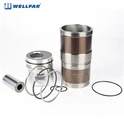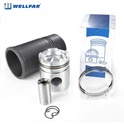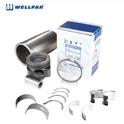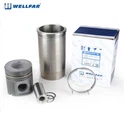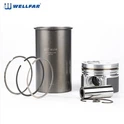The piston is the reciprocating part in the cylinder block of the automobile engine. The basic structure of the piston can be divided into top, head and skirt. The top of the piston is the main part of the combustion chamber, and its shape is related to the type of combustion chamber selected. Gasoline engines mostly use flat-top pistons, which have the advantage of small heat-absorbing area. There are often various pits on the top of the diesel engine piston, and its specific shape, location and size must be adapted to the requirements of the diesel engine's mixture formation and combustion.

Structure
The whole piston can be divided into three parts: piston crown, piston head and piston skirt.
The main function of the piston is to bear the combustion pressure in the cylinder and transmit this force to the crankshaft through the piston pin and connecting rod. In addition, the piston, cylinder head and cylinder wall form a combustion chamber together.
The piston crown is an integral part of the combustion chamber, so it is often made into different shapes. The piston crown of gasoline engines is usually flat or concave, so that the combustion chamber is compact in structure, small in heat dissipation area, and simple in manufacturing process. The crown piston is commonly used in two stroke gasoline engines. The piston crown of diesel engines is often made of various pits.
The piston head is the part above the piston pin seat, and the piston ring is installed on the piston head to prevent high-temperature and high-pressure gas from entering the crankcase and oil from entering the combustion chamber; Most of the heat absorbed by the top of the piston will also be transferred to the cylinder through the piston head, and then transferred through the cooling medium.


